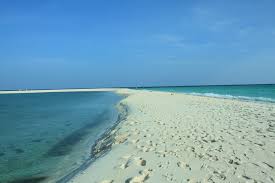For years, my two kids and I vacationed at Isle of Palms, just north of Charleston, SC. Isle of Palms is the barrier island immediately north of Sullivan’s Island, where Fort Moultrie hosted a significant Revolutionary War battle. You can see Charleston Harbor and Fort Sumter from Fort Moultrie’s Sullivan’s Island shoreline.
Barrier islands stretch along the southern half of the east coast, from Virginia down. I grew-up in Vero Beach, Florida, which itself is a barrier island located off the east coast of central Florida. Most barrier islands are nothing but spits of shifting sand. The currents and tides re-carve the beaches along these islands so often that one end of an island may grow while the other end erodes, sometimes as much as a football field in width during a single season.
The beach in front of the place we’d stay on the Isle of Palms likewise shifts. Twenty years ago the beach was so narrow you could spit off the deck into the high tide water pushing at dunes a mere ten feet away. Fifteen years later, you had to walk 200 yards to reach the same water, and the path between dunes and beach grass was well-worn. At low tide, a sandbar would appear, and a swimming pool of ocean water would form between the beach and sandbar.
I often sat on the beach watching waves reshape the sandbar, dolphins passing in front of me on their way to deep water. People surf fishing would catch baby sharks and throw them back. Harmless three-foot hammerheads would swim along the water’s edge foraging for food, scaring children who with their parents would scream as though each hammerhead was Jaws. Other people would play bocce ball, or throw a football, and I would wonder to myself, why would anybody play football barefoot on hot August sand?
August at the beach these days is not much different than it was in those days long past. The beach is primitive and the islands malleable, and I think to myself how foolish it is that people build houses and condominiums so close to the water, not just because of the rising waters of climate change, but also because the beach is primitive and we human beings really don’t understand primitive.
We don’t understand change, either. Back when the ocean water lapped at the edge of the deck, the local island development company spent millions of dollars moving sandbags and rock to protect buildings that some day will be gone anyway. (Not one stone will be left upon another.) That particular year, the buildings were saved, but just a year or two later, you could see the ocean surf shifting sand under houses just down the same beach.
But aren’t we just like the development company? When the metaphoric seas of change lap at our deck we spend untold time and energy, enormous resources, protecting something that nature and God insist must be change? And now, September is here during a year of shifting sands. I feel the fall chill in the air. Life has been altered in untold ways, yet all most people seem to hope for is a return to the ephemeral normal. But there is no such thing as “normal,” there never was.
Which makes me wonder, where might that wayward Spirit be leading us, anyway?

